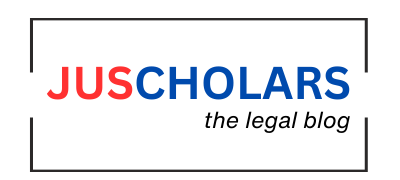1. Introduction
The death sentence to Nimisha Priya by a Yemen court took back our focus on the aspect and versions of “Blood Money”¹. By this article, we will try to get into the nerve of the modern aspect which is Plea Bargaining in the developing nations’ legal aspect like India, USA, and UK and try to understand the core values enshrined into it.
At its most basic, plea bargaining (shall not be misunderstood by “Blood Money”) is a negotiation between the prosecution and the defense in which the accused consents to enter a guilty plea to a lesser charge or to one of several charges in exchange for a concession from the prosecution, usually the dismissal of other charges or a lighter sentence. Although it is frequently seen as a practical way to relieve overworked legal systems, it raises serious concerns about justice, openness, and the rights of the accused.
Because of its widespread occurrence, a comparative perspective is necessary to comprehend its many facets and ramifications. Three well-known common law jurisdictions—India, the United Kingdom, and the United States—are the subject of this study; each represents a different phase in the evolution and adoption of plea bargaining.
Plea Bargain Types
Charge Bargaining: The most popular type, in which a guilty plea is exchanged for the prosecutor agreeing to withdraw some charges or lessen the severity of the charge.
Sentence Bargaining: The prosecutor consents to either support or oppose a specific sentence or refrain from pursuing the maximum punishment.
Fact Bargaining: This less frequent practice involves the prosecutor agreeing to either stipulate or not disclose specific facts that could affect the sentence.
¹ Blood money, or diya, originates from Islamic Sharia law. It involves compensating victims or their families with monetary or asset payments by the perpetrator of a crime. Source
The Legal Framework and Historical Development in the US
As a realistic reaction to growing caseloads and a developing criminal justice system, plea bargaining naturally developed in the United States in the late 19th and early 20th centuries. The Supreme Court’s rulings in Brady v. United States (1970)² and Santobello v. New York (1971)³, which acknowledged its constitutionality while highlighting the necessity of voluntariness and a factual basis for the plea, gave it judicial authority.
² 397 U.S. 742
³ 404 U.S. 257
Advantages and Disadvantages
Advantages:
- Efficiency: Saves taxpayer money, time, and judicial resources by drastically lowering the number of trials.
- Resource Allocation: This enables prosecutors to concentrate resources on cases that are more complicated or serious.
- Victim Considerations: Can help victims avoid the trauma of a trial and receive a quicker resolution.
Disadvantages:
- Coercion and Due Process Issues: Causes anxiety that innocent defendants may be forced to enter guilty pleas in order to escape trial or more severe penalties.
- Lack of Transparency: Because negotiations frequently take place behind closed doors, there is little public scrutiny.
- Erosion of Trial Rights: Undermines the presumption of innocence and the constitutional right to a trial by jury.
- “Trial Penalty”: Defendants who exercise their right to trial may face significantly harsher sentences than those who enter guilty pleas.
Plea Bargaining in the United Kingdom
A More Cautious Approach:
The UK’s approach to plea bargaining, while evolving, has historically been more cautious and less formalized than that of the US. Explicit plea bargaining, especially in the American sense of charge negotiation, is largely absent, instead focusing on “sentence indications” and “credit for guilty pleas.”
Merits:
- Efficiency: Helps reduce backlogs by facilitating the effective resolution of cases.
- Information and Certainty: Encourages earlier pleas by providing offenders with some information regarding possible sentence.
- Saving Resources: Allows the court to use resources for contentious trials.
Demerits:
- Limited Scope: Its flexibility is limited because it does not include the same degree of prosecutorial negotiation as in the US.
- Potential for Undue Pressure: Defendants may feel under pressure to enter a guilty plea in order to obtain a discount, even in the presence of judicial scrutiny.
- Lack of Openness in Conversations: Although Goodyear’s indications are available to the public, previous conversations that resulted in a plea may not have been completely transparent.
Plea Bargaining in India: A Recent and Evolving Concept
Through the Criminal Law (Amendment) Act, 2005, which added Chapter XXIA (Sections 265A to 265L) to the Code of Criminal Procedure, 1973 (Cr.P.C.), plea bargaining was formally introduced in India very recently. Prior to this, judges frequently regarded it with mistrust and it was not expressly acknowledged.
Indian Aspect of Plea Bargaining:
Prior to 2005, courts frequently disapproved of any kind of negotiation in criminal cases because they believed it to be incompatible with the search for justice and the truth. In its 142nd Report, the Law Commission of India suggested that plea bargaining be implemented⁴ in order to reduce the massive backlog of cases and to establish a system for expedited resolution. The Cr.P.C.’s Chapter XXIA describes a methodical plea-bargaining procedure. It applies in situations where:
- No woman or child under the age of fourteen is the victim of the violation.
- The maximum penalty for the offense is no more than seven years in jail.
- The offense has no impact on the nation’s socioeconomic circumstances.
⁴ Source
Procedure and Scope
The procedure entails:
- Accused’s Application: The accused must willingly file a written application to the court indicating their wish to engage in plea negotiations.
- Preliminary Examination: To make sure the application was made voluntarily and not under duress, the court looks at the accused.
- Meeting between Parties: The victim, the accused, and the prosecutor meet in order to try to reach a mutually satisfactory disposition (MSD). The judge does not take part in the negotiations, but the court facilitates this meeting.
- Report to the Court: The court receives a report if a mutually agreeable resolution is achieved, which is followed by the court’s decision.
Advantages and Disadvantages
Advantages:
- Caseload Reduction: Seeks to greatly lessen the strain on the court system, which is currently overburdened.
- Quick Disposal: Provides a way for criminal matters to be resolved more quickly.
- Victim Compensation: Highlights this as a key component of the settlement.
- Rehabilitative Focus: Makes probation and rehabilitation possible.
Disadvantages:
- Limited Applicability: The overall impact of plea bargaining is limited by the limitations on the kinds of offenses for which it can be pursued.
- Fear of Coercion: Despite protections, there are still worries that persons who are accused, particularly those from underrepresented groups, may be coerced into entering a plea.
- Lack of Knowledge: The general public and even legal experts continue to have little knowledge of plea bargaining.
- Judge’s Role: The judge has little direct involvement in the negotiating process and primarily facilitates.
- Abuse Potential: Despite the existence of safeguards, there are worries about possible abuse or corruption.
Conclusion and Comparative Analysis
The comparative study reveals distinct approaches to plea bargaining across the three jurisdictions, each shaped by their unique legal histories and societal needs.
| Feature | USA | UK | India |
|---|---|---|---|
| Origin | Organic, pragmatic response to caseloads | Evolved through case law (Goodyear) & credit for guilty pleas | Statutory (Cr.P.C. 2005 Amendment) |
| Formality | Highly formalized (Rule 11) | Less formal, “sentence indications” & “credit” | Structured, statutory procedure |
| Scope | Broad, applies to most criminal cases | Primarily sentence-focused, limited charge discussion | Limited to offenses with punishment < 7 years |
| Negotiator | Prosecutor & Defense | Judge (for indication), informal prosecution/defense discussions | Prosecutor, Accused, Victim (facilitated by court) |
| Judicial Role | Oversees voluntariness & factual basis | Provides sentence indication, applies guidelines | Facilitates MSD, confirms voluntariness, disposes |
| Emphasis | Efficiency, certainty, resource allocation | Efficiency, encouraging early pleas | Efficiency, victim compensation, speedy disposal |
| Prevalence | Very High (90–95% of cases) | Significant (due to guilty plea credit) | Growing, but still relatively low |
Despite its great efficiency, the US model is frequently criticized for its potential for erroneous convictions and lack of due process. By providing incentives without overt prosecutor’s negotiation on charges, the UK’s calibrated approach places a higher priority on judicial discretion over punishment. Comparatively, India’s new system is a big step in the right direction, though it has limitations in terms of awareness, scope, and the need for strong execution.
In all, plea bargaining is still a controversial but necessary component of contemporary criminal justice. Even while its efficiency advantages are indisputable, all three countries continue to struggle to find a careful balance between ensuring the accused’s fundamental rights are protected and advancing justice. Each country will likely focus on enhancing transparency, ensuring voluntariness, and strengthening victim participation, while continually adapting to the evolving demands of their respective justice systems.
Author Name- Diya Panwar, a 3rd-year BBA LLB student at VIPS, Delhi.





